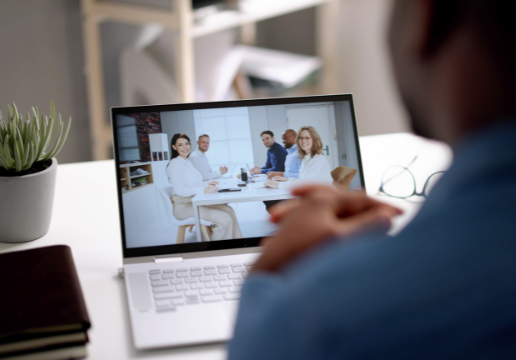How Legal Videography Helps Record Crucial Legal Evidence
Wiki Article
Why Legal Videography Is Essential for Accurate Court Recordings
The function of legal videography in court room settings can not be overstated, as it offers as an important tool for protecting the integrity of court documents. By catching both spoken and non-verbal interaction, it boosts the clarity of witness statements and shows the nuances of court communications. This extensive documents not just help in decreasing prospective misconceptions yet likewise sustains appellate testimonials, thereby reinforcing the judicial procedure. The effects of integrating legal videography into conventional court room techniques elevate crucial concerns regarding its more comprehensive effect on the legal system. What might these implications involve?Relevance of Visual Proof
In the realm of legal process, the relevance of aesthetic proof can not be overemphasized. Visual evidence serves as a powerful tool in developing truths, affirming testimonies, and enhancing the general quality of a situation. This kind of proof, that includes pictures, videos, and diagrams, can give a substantial context that verbal descriptions typically do not have, consequently using juries and judges a more clear understanding of the situations bordering a situation.Additionally, aesthetic evidence aids in the retention of details. Human cognition is naturally aesthetic, and individuals are most likely to bear in mind and comprehend info offered in a visual style. In the court room, this can be important, as compelling aesthetic proof can persuade point of views and strengthen the narrative presented by lawful representatives.
In addition, using visual evidence can lessen misunderstandings and ambiguities that usually develop from verbal exchanges. By giving a direct representation of occasions, visual proof aids to get rid of subjective analyses and cultivates a much more objective assessment of the facts. Subsequently, the integration of visual evidence into lawful procedures not only enhances the stability of the judicial process but additionally boosts the likelihood of attaining a simply end result.
Catching Non-Verbal Cues
Utilizing innovative videography methods can considerably boost the capture of non-verbal hints during lawful procedures. Non-verbal communication, consisting of faces, body language, and eye contact, plays an important function in sharing feelings and purposes that may not be explicitly mentioned in spoken testimony. legal videography. Legal videography utilizes high-definition cams and tactical angles to ensure that these subtle cues are videotaped with clearness and precisionThe capacity to assess non-verbal actions can provide valuable context to statements made during court sessions. For example, a witness's reluctance or confidence can be interpreted through their position or motions, potentially influencing the court's understanding of credibility. Additionally, making use of close-up shots can help concentrate on a speaker's expressions, permitting for a much more nuanced understanding of the testimony.
Furthermore, incorporating several electronic camera angles can create a comprehensive sight of interactions, highlighting characteristics between events involved. This diverse strategy not just boosts the precision of the court record but likewise aids in protecting the stability of the judicial process - legal videography. Ultimately, recording non-verbal signs via legal videography cultivates a richer, more complete representation of courtroom procedures

Enhancing Testimony Integrity
The integrity of statement can be significantly strengthened with using high-grade legal videography. Video clip recordings work as an objective tool that records not only the spoken words of witnesses however likewise the subtleties of their delivery, consisting of tone, pacing, and emotional expressiveness. This diverse documents gives a more clear understanding of the witness's credibility and intents, which can be pivotal in legal process.Moreover, lawful videography minimizes the capacity for false impressions that may develop from written transcripts alone. When jurors can observe a witness's disposition and body language in conjunction with their testament, they are much better equipped to examine the credibility and integrity of the evidence provided. This aesthetic context can reinforce the testimonial story, making it more compelling and trustworthy.
In addition, the visibility of a video recording can discourage prospective variances in testament. Witnesses might be more cautious in their statements when they know they are being videotaped, causing more precise and honest accounts. Generally, high-grade lawful videography enhances the integrity of testimony, ensuring that the court has access to a total and genuine representation of the truths as communicated by the witnesses.
Supporting Appeals and Reviews
Lawful videography plays a critical role in supporting appeals and reviews by supplying a detailed aesthetic record of courtroom proceedings. This aesthetic documents catches not only the talked words of witnesses and attorneys however additionally the subtleties of body movement, tone of voice, and court characteristics. Such aspects can be essential in comprehending the context of testaments and arguments provided.In the appellate process, where the focus gets on mistakes of regulation and procedural fairness, a video clip document can serve as an important tool for appellate courts. It makes it possible for courts to assess the initial test context, making certain that decisions are based on a total understanding of the process. The ability to aesthetically analyze the disposition of witnesses or the interactions in between celebrations can disclose understandings that composed transcripts might forget.

Additionally, legal videography can help in making clear uncertainties in testimonies or procedural judgments, therefore enhancing the basis for an appeal. By using a reputable, objective account of what taken place in court, legal videography not just sustains the integrity of the lawful procedure yet also encourages all parties entailed to make enlightened decisions regarding their instances.
Simplifying Courtroom Processes
Enhancing court room effectiveness, lawful videography simplifies procedures by providing instant accessibility to aesthetic documents of proceedings. This technology permits judges, lawyers, and juries to review critical get more testament and proof, making certain that all parties have a clear understanding of the case. By capturing the nuances of verbal and non-verbal communication, videography enriches the record, making it easier to grasp the context and weight of testimonies.
Additionally, video clip recordings can assist in remote participation in hearings, enabling better adaptability in organizing and engagement, which is specifically beneficial in intricate cases entailing multiple stakeholders.
Verdict
To conclude, lawful videography plays a crucial duty in ensuring exact court recordings by giving necessary visual evidence that catches both verbal and non-verbal communication. This technique enhances the dependability of testimonies, supports Discover More Here appellate reviews, and streamlines court room procedures. By promoting an extensive understanding of court room characteristics, legal informative post videography eventually adds to much more fair judicial end results, reinforcing the stability of the lawful system and facilitating notified decision-making.Report this wiki page